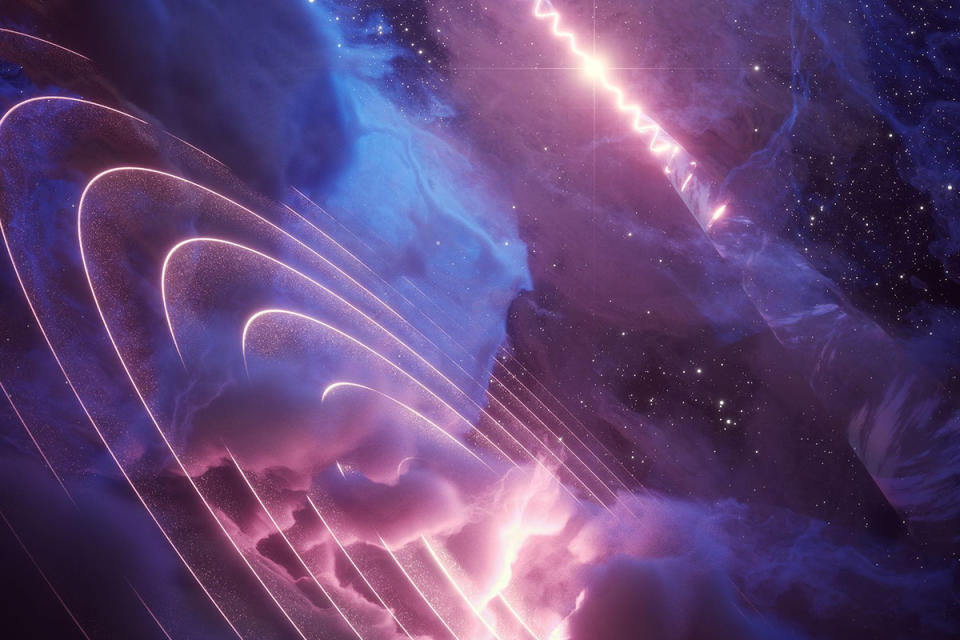Mysterious 'heartbeat' detected from gas cloud in space

Telescopes on Earth and in space have detected a mysterious “cosmic heartbeat” coming from a gas cloud in the Aquilla constellation.
According to scientists, the strange pulses are linked to material blasted out of a black hole in a nearby star system – which is sucking material from a vast star 30 times the size of our Sun.
The researchers said the “gamma ray heartbeat” in Aquilla pulses in time with a black hole 100 light years away in the SS 433 system.
The black hole sucks matter from the giant star while orbiting it, forming a swirling accretion disc that drains into the black hole, like water into a bathtub drain, they said.
Read more: Astronomers find closest black hole to Earth
Some of the matter doesn’t fall into the hole though, but rather jets out in high-speed spirals from the disc’s centre in both directions.
The results were published today in the journal Nature Astronomy.
Study co-author Jian Li, a Humboldt Fellow with the Deutsches Elektronen-Synchrotron in Zeuthen, Germany, said: “This result challenges obvious interpretations and is unexpected from previously published theoretical models.
“It provides us with a chance to unveil the particle transport from SS 433 and to probe the structure of the magnetic field in its vicinity.”
The researchers said that despite the distance between the black hole and the gas cloud, the pulses are in perfect time.
Read more: There might once have been life on the moon
“The consistent periods indicate the gas cloud’s emission is powered by the micro quasar,” Li said.
Scientists still do not fully know how the jets overcome the black hole’s pull and are emitted from the disc.
The current study presents a new question: how does the black hole power the gas cloud’s heartbeat?
Read more: Exoplanet twice the size of Earth ‘could be habitable’
One suggestion is that the cloud’s gamma-ray emissions are caused by the injection of the nuclei of hydrogen atoms, known as fast protons, that are produced at the end of the jets, or near the black hole.
“SS 433 continues to amaze observers at all frequencies and theoreticians alike,” Li said.
“And it is certain to provide a testbed for our ideas on cosmic-ray production and propagation near microquasars for years to come.”

 Yahoo Sports
Yahoo Sports 
